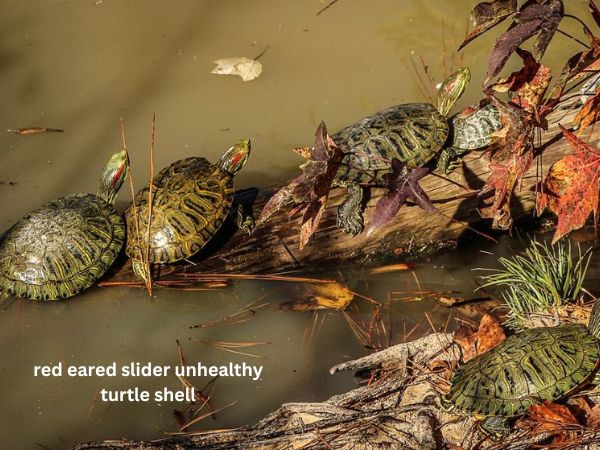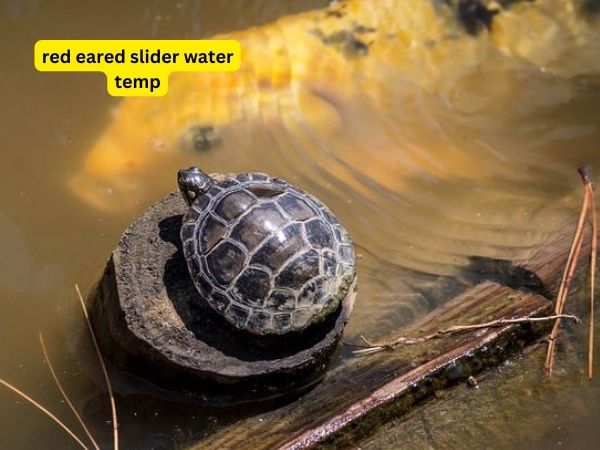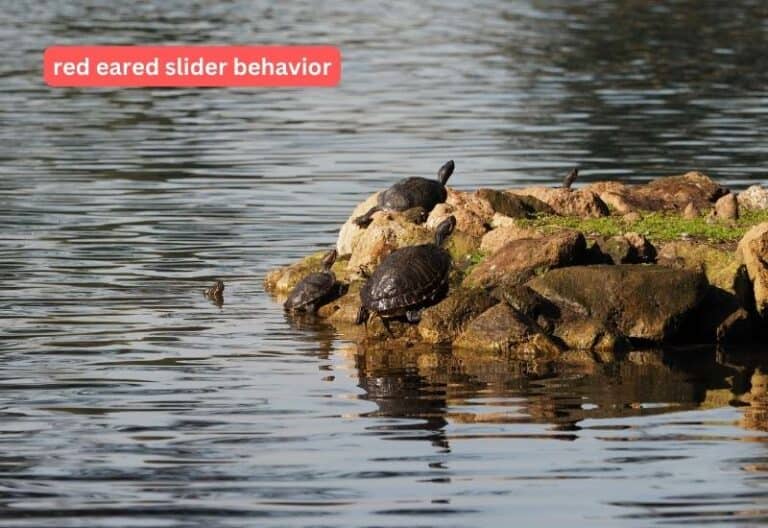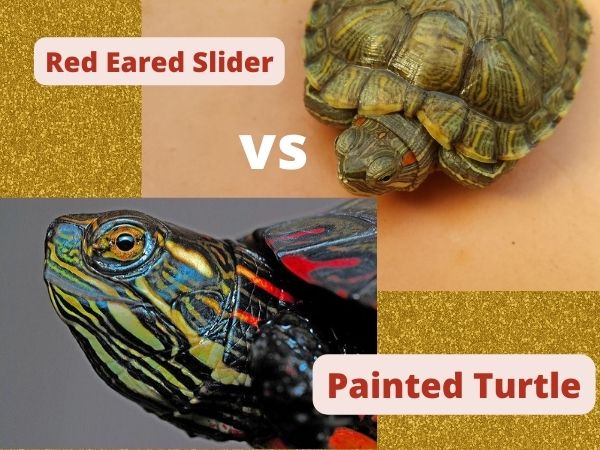red eared slider unhealthy turtle shell: Causes and Solutions
Today we discuss red eared slider unhealthy turtle shell. Red-eared sliders make popular pets, but many people are unaware of the unique needs of these turtles. One common problem seen in red eared sliders is an unhealthy turtle shell. In this post, we’ll take a closer look at what can cause a turtle’s shell to become unhealthy and how to correct the issue.
a healthy red eared slider turtle shell:
A healthy red eared slider turtle shell is usually smooth and should not have any bumps, ridges, or cracks. The shell should be a consistent color and should not be lighter or darker in certain areas.
signs of red eared slider unhealthy turtle shell:
There are a few signs to look out for if you’re concerned about the health of your turtle’s shell. One is that the shell may be soft and flexible, rather than hard and sturdy.
Further, if the shell is covered in patches of black or green mold, this could be a sign of bacterial infection.
Ultimately, if the scutes (the bony plates that make up the shell) start to peel off, this can also be a sign of infection or poor health.
causes of shell rot in red-eared sliders:
There are some happenings that can cause shell rot in red eared sliders. One common cause is a bacteria called Pseudomonas aeruginosa. This bacteria can infect the slider’s shell if it gets into a wound and causes the shell to become soft, cracked, and discolored.
The next common cause of shell rot is a fungal infection. Fungi can infect the slider’s shell if it comes into contact with water that is contaminated with the fungus and can cause the shell to become soft, cracked, and covered in black lesions.
There are also several other potential causes of shell rot in red eared sliders, including environmental factors, nutritional deficiencies, and parasites.
treatment of shell rot and fungal infections:
Treatment for shell rot and fungal infections will vary depending on the severity of the infection, but can generally be treated with antibiotics, antifungals, or fungicides.
If you suspect that your turtle has a shell rot or fungal infection, it is important to take it to a qualified veterinarian as soon as possible for treatment.
In the meantime, you can try treating it with a soak in diluted Betadine (1 part Betadine to 10 parts water), which can help kill off any bacteria or fungus present. You should also clean the tank and substrate regularly to prevent the spread of the infection.
clean a red eared slider shell:
Red eared slider shells can be cleaned by using a soft toothbrush and warm water. Soap can be used to clean the shell if needed, but make sure to rinse it off completely afterward. The best way to keep a red eared slider’s shell clean is by regularly wiping it down with a damp cloth.
how long does shell rot take to heal:
If the injury is to the soft tissue inside the shell, it can take 4-6 weeks for it to heal. If the injury is to the hard shell, it can take up to 12 weeks for it to heal.
The rate at which a shell will heal depends on a number of factors including: the size and location of the injury, how deep the injury goes, whether there is an infection, and how healthy and strong the turtle is overall.
healthy vs unhealthy turtle shell
1. A healthy turtle shell is usually hard and shiny.
2. An unhealthy turtle shell may be soft, flaky, or dull in appearance.
3. Healthy turtles typically have a bright coloration on their shells. Unhealthy turtles may have faded colors or patterns.
4. If a turtle’s shell is cracked, chipped, or otherwise damaged, this can indicate poor health.
5. If a turtle has growths or bumps on its shell, this could be a sign of disease or illness.
6. Healthy turtles should have a smooth shape to their shell. If the shell is misshapen, this could be an indication of health problems.
7. The bottom of a healthy turtle’s shell should be flat. If it is sunken in or curved, this could be a sign of malnutrition.
8. Healthy turtles typically have a strong and steady heartbeat. If the turtle’s heartbeat is weak or irregular, this could be a sign of illness.
8 differences between healthy vs unhealthy turtle shells :
| healthy turtle shells | unhealthy turtle shells |
|---|---|
| A healthy turtle shell is usually hard and shiny. | An unhealthy turtle shell may be soft, flaky, or dull in appearance. |
| Healthy turtles typically have a strong and steady heartbeat. | If the turtle’s heartbeat is weak or irregular, this could be a sign of illness. |
| Healthy turtles typically have a bright coloration on their shells. | Unhealthy turtles may have faded colors or patterns. |
| The bottom of a healthy turtle’s shell should be flat. | If it is sunken in or curved, this could be a sign of malnutrition. |
| Healthy turtles should have a smooth shape to their shell. | If the shell is misshapen, this could be an indication of health problems. |
A checklist to keep your turtle shell healthy:
- Check for any cracks, growths, or other changes in appearance.
- Gently clean the shell with a soft cloth and mild soap. Avoid using anything abrasive.
- Inspect the shell regularly for any sign of illness or injury.
- Keep your turtle’s habitat clean and free of debris.
- Provide your turtle with a diet rich in calcium to maintain healthy bones and shells.
- Take your turtle to the vet for regular checkups.
- Have your turtle’s shell professionally cleaned and polished every few years.
- Provide your turtle with a warm, dry place to bask in the sun.
- Keep your turtle’s environment clean and free of harmful chemicals.
- Never remove your turtle’s shell for any reason.
A healthy shell is important for a happy and long-lived turtle! By following these steps, you can help ensure that your turtle enjoys a healthy life for many years to come.
Frequently Asked Questions (Faqs):
Answer:
Some people believe that a soft shell is an indication that the turtle is unhealthy, while others believe that it’s a sign that the turtle is well-nourished and healthy. Ultimately, the best way to know if a soft shell is healthy or not is to ask a veterinarian.
Answer:
An unhealthy turtle shell can look dry, cracked, and flaky. The shell may also be discolored or have a foul odor. If your turtle has an unhealthy shell, it’s important to take him to a vet for treatment. Untreated shell infections can be deadly.
Answer:
It depends on the severity of the crack and the health of the turtle.
If the crack is small and there is no damage to the underlying bone, then a turtle can recover. However, if there is significant damage to the bone or if the crack is large, then a turtle will not be able to recover and will need surgery.
Answer:
the most likely is a fungus or parasite. Shell rot is a common fungal infection that affects turtles and can cause the shell to turn white.
Other potential causes of a white shell include parasites such as ticks or flatworms, nutritional deficiencies, and cancer. If you think your turtle has a white shell, it’s best to take him to a vet for evaluation and treatment.

final words:
finally, we got that, One of the most important things to pay attention to red eared sliders is their diet – If they don’t get the right nutrients, they may start developing unhealthy shell problems. Keep your slider healthy by providing a balanced diet and lots of exercises!



